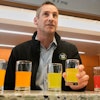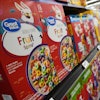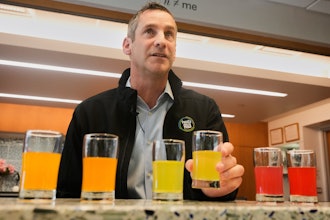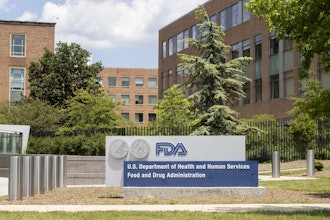
Plaintiff’s lawyers continue to file putative class actions, claiming that their clients have been misled by a food or beverage label and other advertising.
Some of the cases filed in 2022 have gained attention in the mainstream press. As we look ahead to 2023, we can expect plaintiff’s lawyers to challenge any statement on a label that could arguably be misleading in any regard even if the interpretation advanced in the suit is different from what food and beverage companies intended. Food and beverage companies should remain vigilant in substantiating any express or implied marketing claims made, stay current on case theories, and engage counsel to resolve potential disputes at early stages.
Trends in Recent Class Actions
Here are samples of the types of class action that food and beverage companies faced this year:
- More claims based on the presence or absence of ingredients (e.g., presence of non-strawberry ingredients in “Strawberry” Pop-Tarts, or non-butter ingredients in “Golden Butter” crackers);
- Nutrient content claims alleging products do not provide the nutrient benefits claimed (e.g., protein content claims);
- Ingredient-based claims asserting that the food is implicitly advertised as healthy despite containing an allegedly unhealthy ingredient (e.g., too much sugar);
- Claims alleging that products contain fewer than the advertised number of servings (e.g., coffee canisters that purportedly do not contain enough grounds to deliver the claimed number of cups of coffee); and
- Environmental, social or corporate governance-related claims alleging presence of an allegedly harmful substance (e.g., attacking the alleged presence of per- and polyfluoroalkyl substances and heavy metals).
PFAS, Heavy Metals, and Titanium Dioxide: The Newest Line of Attack
One of the fastest growing trends to watch in 2023 concerns class action lawsuits targeting allegedly harmful substances in food products, including perfluoroalkyl and polyfluoroalkyl substances (collectively “PFAS”), heavy metals, and titanium dioxide.
Dozens of putative class actions targeting consumer packaged goods for allegedly containing PFAS – a group of chemicals used to make packaging oil and water resistant – were filed in the past year. These cases assert that PFAS in a product’s packaging render labels stating the product is “healthy” or “sustainable” misleading. These filings show how closely plaintiffs’ attorneys follow media reports. In March 2022, Consumer Reports published “Dangerous PFAS Chemicals Are in Your Food Packaging.” Within two months of that publication, at least five class action lawsuits making claims based on PFAS were filed against companies identified in the report.
Similarly, cases challenging the use of certain substances in food products continue to proliferate. For example, recently filed complaints target the use of titanium dioxide – a color enhancer also known as TI02 – alleging that its use renders food products unsafe, despite the fact that the Food and Drug Administration (FDA) has generally approved the use of TI02, subject to specific restrictions.
Upcoming Change to FDA’s Definition of “Healthy” and Health Halo Claims
On February 16, 2023, FDA will close the comment period on its proposed rule updating the definition of “healthy.” Under FDA’s proposed rule, foods may be labeled as “healthy” if they comply with two general requirements: (1) The product must contain a meaningful amount of food from at least one of the food groups or subgroups recommended by the current FDA Dietary Guidelines for Americans (vegetables, fruits, grains, dairy and protein); and (2) The food must follow specified limits on specific nutrients, namely added sugars, saturated fats and sodium. FDA plans to provide companies three years to comply with the final rule. Nonetheless, food manufacturers that use, or plan to use, “healthy” on labeling should closely follow the proposed regulations.
While this rule-making process goes on in the background, plaintiff’s attorneys continue to file “health halo” class actions claiming that the food’s label suggests that it is “good for” consumers, but some ingredient(s) in the product renders that representation false or misleading.
These “health halo” claims are based on statements, including “protein packed,” “nutritious,” “wholesome,” “no high fructose corn syrup,” “balanced,” “good for your family,” and “clean, simple ingredients.” The recent rise of these class actions, in addition to the proposed new FDA regulations, suggest manufacturers should keep this issue in mind when developing marketing and labeling.
Recent Settlements in Food and Beverage Class Actions
Some lawsuits settle on a confidential basis involving only the named plaintiff, his or her lawyer and the defendant food company. Occasionally, defendants settle on a classwide basis which provides broader relief as the settlements resolve the claims between the defendant and the class of persons on whose behalf the lawsuit was filed. Consumer class actions can have classes with hundreds of thousands of putative class members. As a result, even settlements that offer small amounts of monetary relief to each class member may aggregate to large amounts due to the number of members in the class. These settlements also include significant attorneys’ fee awards, driving up the total amount the defendant pays.
For example, in Browning v. Anheuser-Busch, the defendant entered into an agreement to settle a case alleging that it misleadingly marketed beverages with cocktail-inspired names like “sparkling margarita,” “mojito” and “sangria” that were, in actuality, flavored beer that contained no spirits. Pursuant to the settlement agreement, class members may seek up to $.85 per product purchased. Additionally, Anheuser-Busch agreed to pay $2.1 million in attorneys’ fees.
As another example, in Hezi v. Celsius, the defendant agreed to pay $7.8 million, with $2.9 million in attorneys’ fees, to settle a case asserting that it deceptively labeled fitness drinks as containing “No Preservatives,” when they contained citric acid.
How Should a Food and Beverage Company Be Prepared to Defend Claims?
As the landscape of claims pursued by plaintiff’s lawyers changes and expands, food and beverage companies should ensure that label statements and marketing claims are supported by sufficient evidence and comply with regulatory requirements. Keeping records relating to the factual basis for label statements will ensure that claims are substantiated and allow companies to explain the basis for the substantiation. In addition, maintaining records showing changes in labels and other advertising can also prove helpful.
Robert Guite is a partner in Sheppard, Mullin, Richter & Hampton LLP’s Business Trial practice group and a member of the Food and Beverage team. Sascha Henry leads both the firm’s Food and Beverage industry team and the Business Trial practice group. Abigail Miles is an associate in the firm’s Business Trial practice group and member of the Food and Beverage industry team.






















